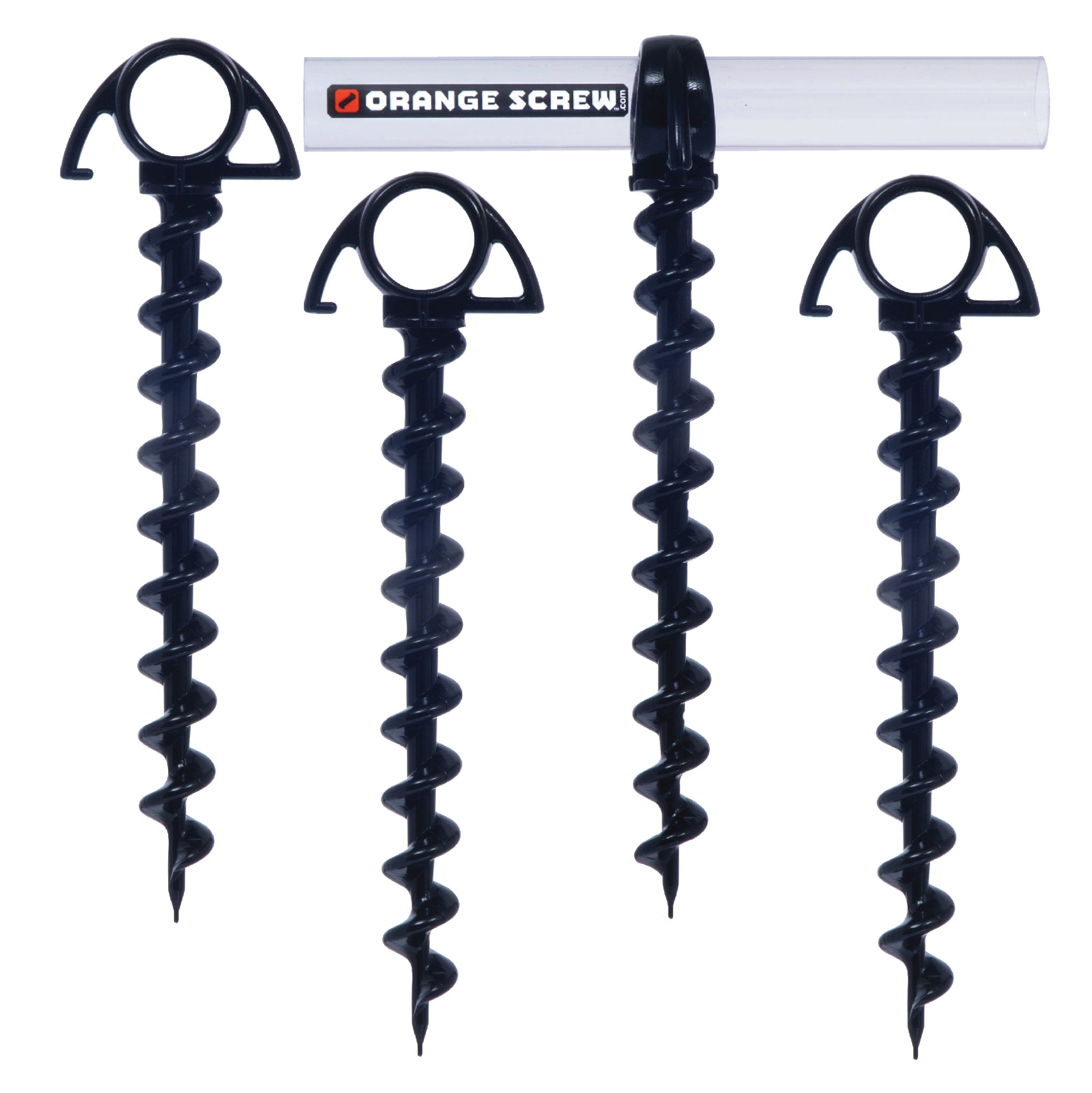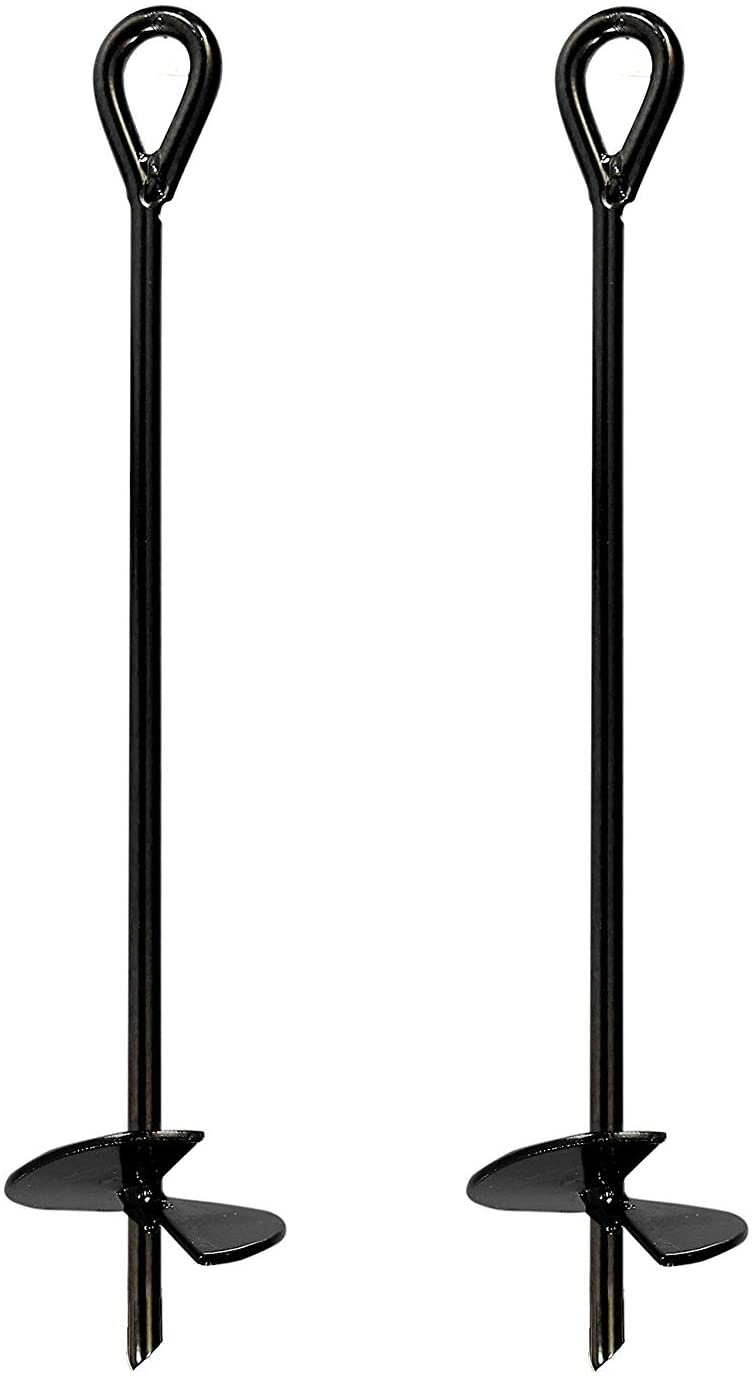Methods a Ground Anchor Can Enhance Protection for Your Structures
Methods a Ground Anchor Can Enhance Protection for Your Structures
Blog Article
Discover the Different Kinds Of Ground Support for Your Following Task
From auger supports, which succeed in varied dirt conditions, to risk supports developed for temporary installations, the alternatives are various. Additionally, concrete and screw supports existing special advantages in certain situations, while deadman anchors are customized for applications requiring resistance to side pressures.

Auger Anchors
Auger anchors are a preferred selection in various building and landscaping jobs due to their special design and effective securing capacities. These anchors include a helical screw-like shaft that is driven into the ground, enabling for a secure and safe and secure hold. The spiral design assists in very easy installation and makes best use of resistance versus lateral forces, making auger supports specifically effective in applications such as secure fencing, temporary structures, and erosion control.
The installation procedure of auger supports is fairly uncomplicated. Auger supports can be quickly eliminated and reused, which includes to their cost-effectiveness and sustainability.
Among the significant advantages of auger supports is their capacity to distribute loads evenly across the surrounding dirt, reducing the threat of dirt disruption and minimizing ecological influence. In addition, they are less prone to heaving or loosening up in time contrasted to conventional securing approaches. Auger supports are an excellent choice for projects needing reputable and resilient anchoring options.

Stake Anchors
When it involves securing structures in a selection of exterior applications, risk supports supply a dependable and uncomplicated solution. These anchors are commonly built from resilient products such as steel or aluminum, made to stand up to ecological anxieties while giving optimum security. Their straightforward design permits fast setup, making them an excellent option for short-lived or long-term anchoring demands.
Risk supports are especially beneficial in protecting outdoors tents, canopies, and other lightweight frameworks against wind and climate. They operate by being driven into the ground at an angle, creating a strong hold that stands up to pull-out pressures - Ground Anchor. The performance of risk anchors relies on a number of aspects, consisting of soil kind, wetness web content, and the angle of setup
For included protection, numerous stake anchors include accessory factors for ropes or straps, enabling tension adjustments as essential. In applications such as landscaping or building and construction, they can effectively support tools or frameworks on uneven surface. In general, risk supports provide a economical and functional option for safeguarding numerous exterior installments, making them a favored choice for specialists and do it yourself fanatics alike.
Concrete Anchors
Concrete anchors give a durable service for protecting frameworks to concrete surface areas, making certain stability and safety in various applications. These anchors are crucial for tasks varying from property building and constructions to massive industrial setups. They are available in different types, including development anchors, glue supports, and undercut anchors, each created for particular lots needs and environmental conditions.
When mounted,Development anchors depend on mechanical systems to grip the concrete. They are perfect for tool to sturdy applications. Glue supports make moved here use of high-strength epoxy or material to bond the anchor to the concrete, offering premium load-bearing abilities, particularly in fractured concrete situations. Undercut anchors produce a distinct form within the concrete, providing outstanding holding power, especially in applications where tensile loads are widespread.
Choosing the suitable concrete support includes taking into consideration aspects such as the weight of the tons, the problem of the concrete, and environmental problems. Appropriate setup strategies are important to guarantee optimal efficiency and integrity. When performed correctly, concrete supports considerably enhance the architectural honesty of different tasks, making them vital in contemporary construction practices. Recognizing the particular needs of your task will aid in picking the best kind of concrete anchor for the job.
Screw Anchors

Screw anchors are a versatile fastening option that can be successfully used in a variety of applications where conventional concrete anchors might not be adequate. These supports contain a helical design that permits them to be quickly driven into the ground, making them perfect for use in soil and various other substratums. Their unique structure gives exceptional holding power and resistance to pull-out pressures, making them suitable for countless projects, from landscape design to structural assistance.
One of the primary benefits of screw supports is their ease of installment. They need very little devices and can often be installed without the demand for excavation, which saves both time and labor prices. In addition, screw anchors can be removed and recycled, using a sustainable solution for momentary applications.
Screw supports are particularly valuable in areas where dirt problems are testing, such as loosened or sandy soils. Their capability to be installed at differing midsts enables for modification based upon particular job needs. Generally, screw anchors give a reliable and efficient securing approach, making them an exceptional selection for professionals and designers seeking effective solutions for their projects.
Deadman Anchors
Deadman supports work as a robust solution for maintaining frameworks in difficult conditions, specifically where standard anchoring methods might drop brief. These anchors are composed of big, hefty things hidden underground, which produce resistance against lateral forces. The style commonly entails a horizontal part, such as a block of concrete or a Get More Info metal plate, buried in the soil, to which straps or wires are connected.
The performance of deadman supports hinges on their capability to disperse loads over a bigger area, lowering the danger of failure in unsteady soil problems. They are particularly beneficial in applications such as preserving wall surfaces, momentary frameworks, and incline stabilization, where dirt movement can compromise the stability of the structure.
Installment of deadman anchors needs cautious preparation to guarantee they are placed at the appropriate depth and alignment, maximizing their load-bearing capability. While they may need even more labor and material than light-weight supports, their dependability in damaging problems makes them very useful for long-term jobs. In addition, deadman supports are functional and can be adapted to various applications, making them a go-to selection for engineers encountering distinct challenges in their projects.
Verdict
Auger supports excel in diverse dirt problems, while stake supports suit short-lived applications. For concrete surfaces, development and sticky supports supply reliable choices, and screw anchors supply adaptability in difficult surfaces.
Additionally, concrete and screw anchors existing one-of-a-kind advantages in specific situations, while deadman anchors are customized Read More Here for applications calling for resistance to lateral forces - Ground Anchor.Auger supports are a preferred selection in numerous construction and landscape design tasks due to their unique design and efficient anchoring capacities. They come in various types, consisting of growth anchors, glue anchors, and undercut anchors, each designed for specific lots requirements and ecological problems
Adhesive supports use high-strength epoxy or material to bond the support to the concrete, using remarkable load-bearing abilities, particularly in broken concrete situations. On the whole, screw anchors offer a trusted and reliable securing technique, making them an outstanding selection for contractors and designers seeking effective remedies for their tasks.
Report this page